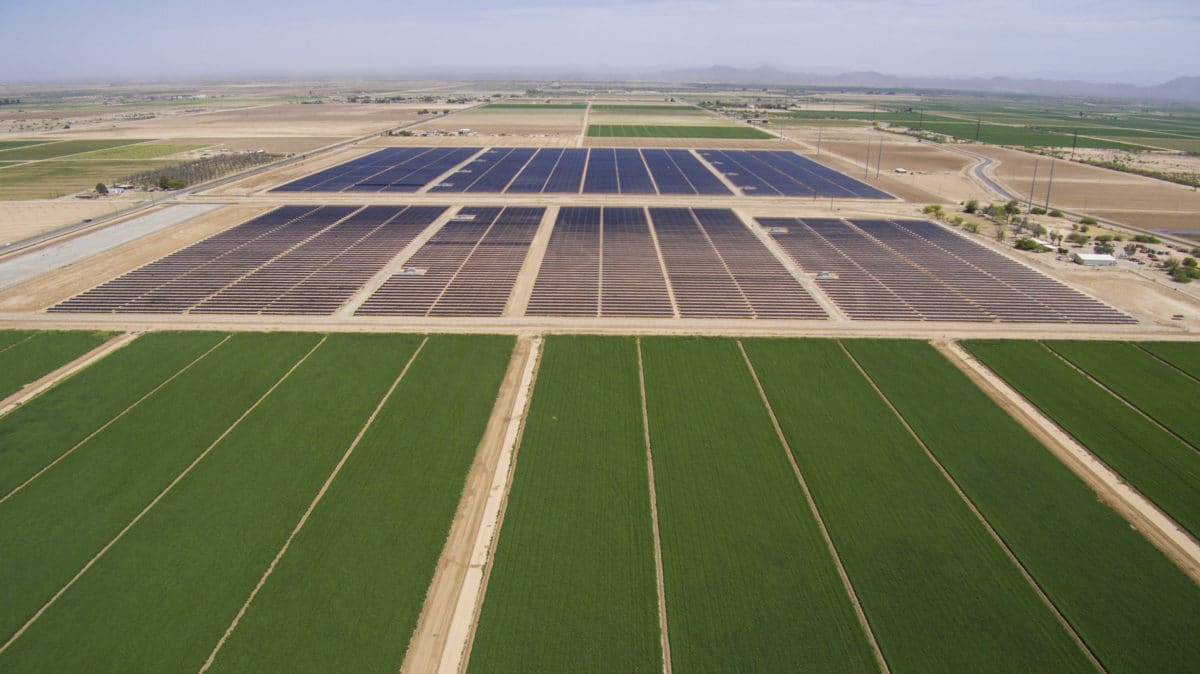NextEra Energy signaled a strong quarter and year judging by the stock’s greater than 50% rise over the past twelve months.
For the full year of 2019, the company’s GAAP net income was $3.8 billion. NextEra Energy Resources, a group within the company that owns a majority of its renewable resources, earned just under $1.7 billion on the year. The company’s broader financial results can be found on its investor page.

The company commissioned 2.7 GW of renewable energy capacity including 700 MWac of solar power and 340 MW/~1.3 GWh of energy storage. In Florida, the company brought on 300 MWac of solar under its utility Florida Power & Light. That subsidiary of NextEra also noted that in 2020, it will deploy the first 750 MWac of its “10 GWac by 2030 goal,” and that it had secured the sites needed to build out those facilities.
5.8 GWac of future capacity was originated in the year, which included 900 MW/~3.6 GWh of energy storage. Of that newly originated solar volume, 50% of it included a battery storage component. The company also noted that more than 2 GW of that future capacity were “trifecta projects that combine wind, solar and battery storage together.”
CEO Jim Robo noted;
We continue to expect that by the middle of this decade, without incentives, new near-firm wind is going to be a $20 to $30 per megawatt hour product, and new near-firm solar is going to be a $30 to $40 per megawatt-hour product. At these prices, new near-firm renewables will be cheaper than the operating cost of most existing coal, nuclear, and less efficient oil and gas-fired generation units.
The terminology “near firm” means the plants will have some form of energy storage included in those prices. The company said it “increasingly sees storage as an important standalone business in its own right, as we are reviewing a number of opportunities to add storage to our existing solar sites to take advantage of the ITC and enhance the value of our existing projects for customers.”
Future solar and energy storage projects expected to be deployed through 2022, but not necessarily signed yet, total between 3.8 and 7.3 GWac of capacity, and 700 MW to 1.4 GW/~2.8 GWh to 5.6 GWh of power, respectively. The chart below (click to enlarge) lists the individual projects that have been contracted already. Also note most of the energy storage projects have 4 hours of capacity sitting behind their power rating.
During the recent earnings call question and answer session, analyst Greg Gordon from Evercore ISI asked whether NextEra was buying the components from different OEMs and building its own bespoke battery storage products, or using a complete system vendor like Fluence. CFO Rebecca Kujawa said the company sees a lot of value in being nimble in procurement of battery packs, as well as containers and other energy storage gear. She added,
Also, we’re designing our own management systems. We ultimately believe that some of the real value add that we’re going to be able to add to customers, that will likely differentiate us from others, is that battery system management…that management system and optimizing that is going to be part of the secret sauce of batteries.
With NextEra noting that all solar power originated after the Q3 earnings calls was coupled with energy storage, it seems that the future “baseload” of the power grid will be based on energy storage.
The total volume of solar actually getting deployed is a bit unknown as DC sizing is part of that secret sauce. For instance, Florida Power & Light has constructed three 74.5 MWac/126 MW power plants – a DC-AC ratio of 1.7:1. The company’s Babcock Solar Farm is the nation’s current largest operational solar+storage power plant – with a 10 MW/40 MWh energy storage system complementing the 74.5 MWac/126MW solar facility.
This content is protected by copyright and may not be reused. If you want to cooperate with us and would like to reuse some of our content, please contact: editors@pv-magazine.com.











Thanks, John. Making me think I should start to invest in NextEra. I’m impressed they are able to achieve such reasonable costs even with near-hard installations. Excited to see where NextEra & FPL go in terms of including distributed storage in the equation as well.
The combination of high DC/AC ratios and limited storage makes the output of solar plants a) very reliable over the forecast time frame and b) pushes output into the morning and afternoon peaks which in turn increases the average power price received by the plant while reducing the possibility of curtailment. It is a key to the future of large scale solar